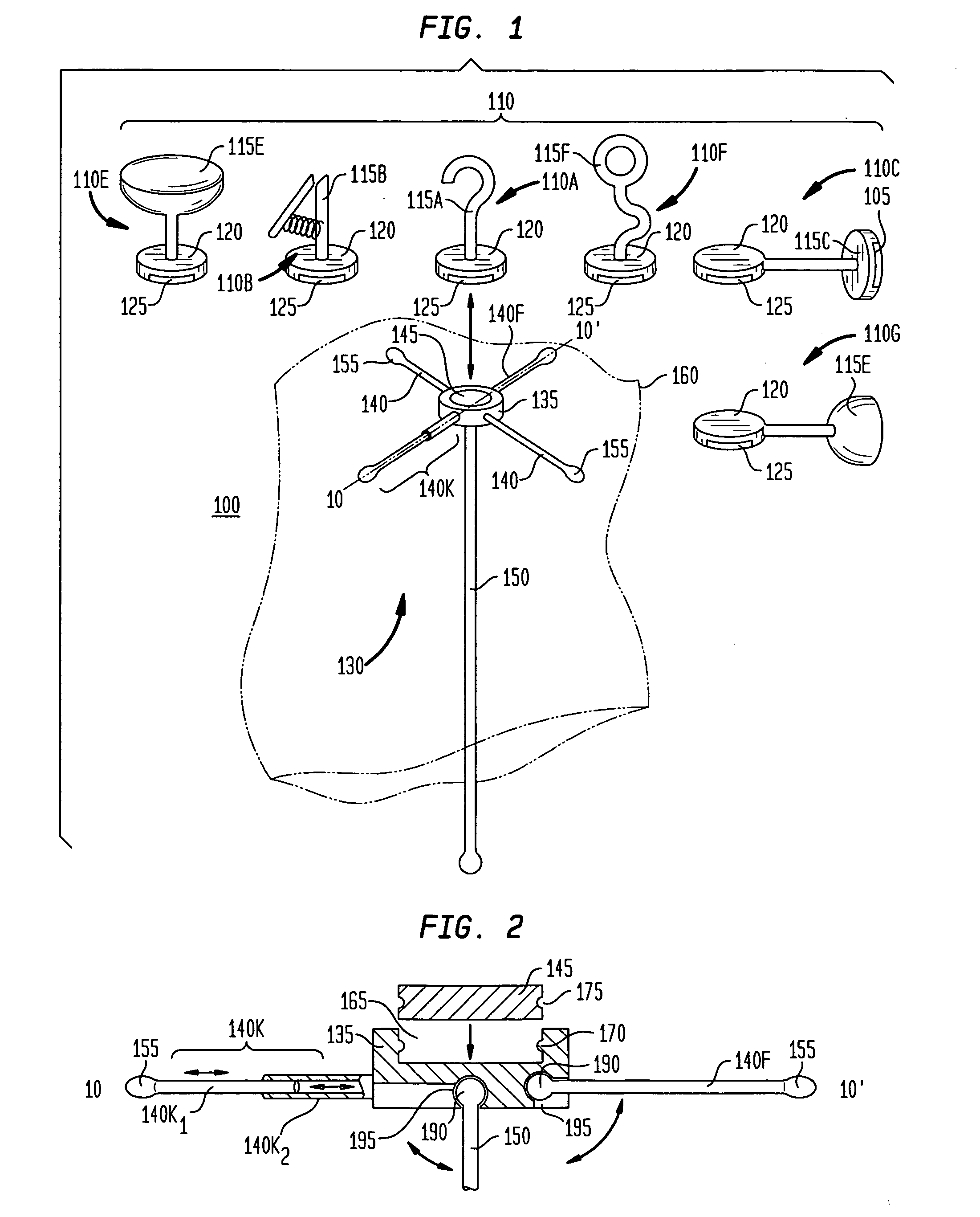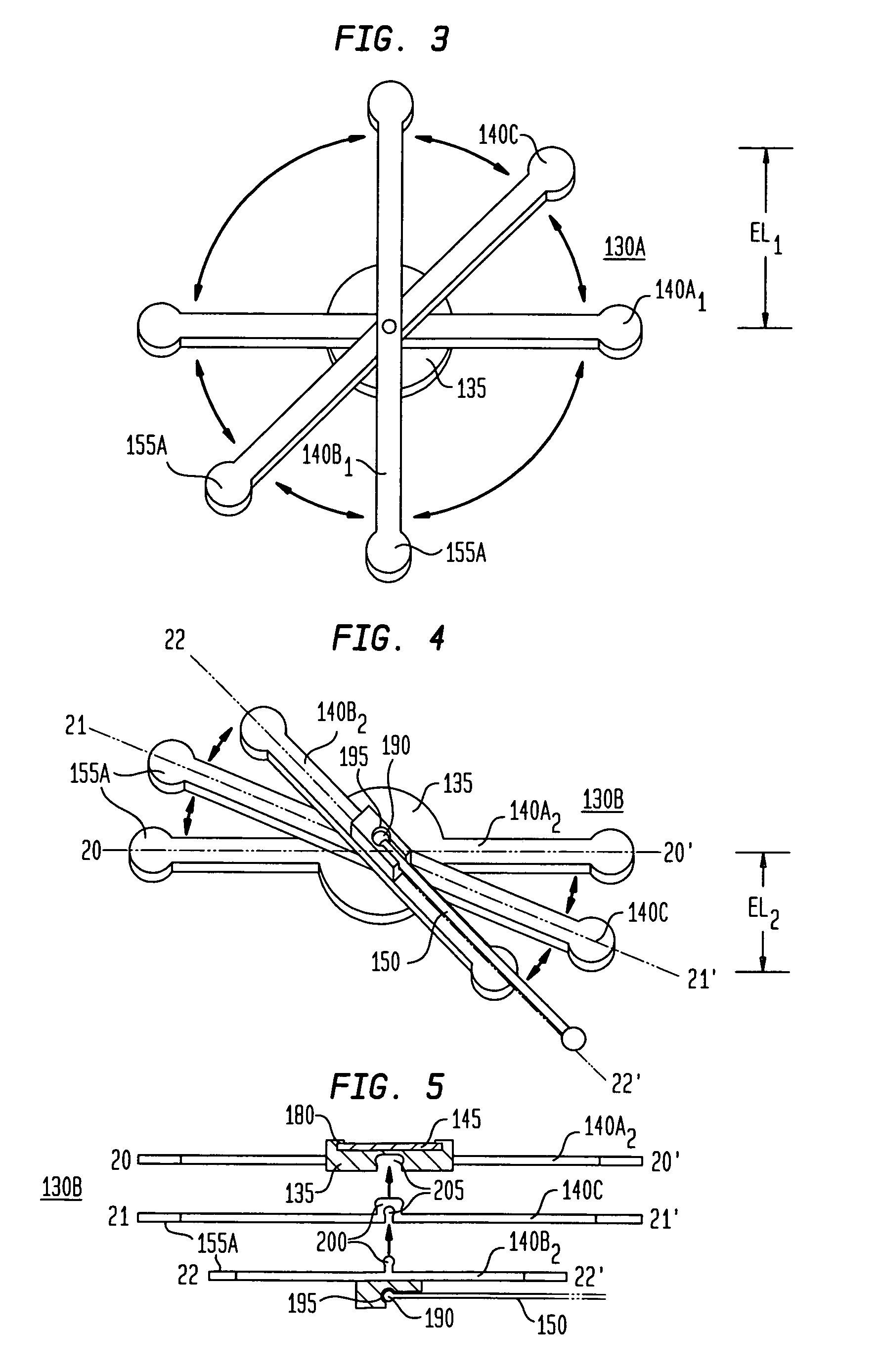Many of these plastic storage bags and other non-biodegradable objects are also expensive, which further creates an economic incentive for their reuse.
The extreme flexibility of the bag's material makes sustaining it in this position difficult.
Moreover, the wet sides of such a washed or rinsed
plastic bag tend to stick together, typically precluding
evaporation of remaining water and potentially encouraging the growth of molds,
mildew,
bacteria, or other possible pathogens.
While turning bags inside-out may improve the drying of the wet sides, the bags are typically damaged in the process, particularly the corners and seams of the bags, rendering them unfit for continued use.
The evaporative drying devices of the prior art, however, have various problems associated with their typical use, such as in a kitchen environment.
The associated drawbacks include, among others, requirements for supporting bases, complicated manufacture and
assembly of many parts, required use of limited counter space, difficulty storing the device, lack of suitable surfaces for suspension, and required
user involvement throughout the drying process.
Such a dryer is impractical when kitchen counter space is limited, which is very common.
In addition, the adjustable
plastic bag dryer of U.S. Pat. No. 5,421,542 requires the manufacture and
assembly of many separate parts, at considerably increased expense.
It further requires a supporting base, which must be physically separated from the remainder of the apparatus for compact storage, increasing the likelihood of the loss of requisite parts and making storage of the device problematic and impractical in a typical home.
This complicated structure is difficult to manufacture, requiring “frustroconical” holes to be drilled within the
dilator ring, with additional
machining and
assembly of many separate parts, at considerable expense.
The drying device of U.S. Pat. No. 5,247,752 also performs comparatively poorly, because it is designed for one wall of a bag to rest along the length of a hanger, which results in excessive contact and blocking of
airflow to the bag, thereby requiring a user to repeatedly change the position of the bag for adequate drying.
In addition, in operation, this device is unsuitable for drying bags of different sizes, either not holding larger bags open sufficiently, not providing sufficient air circulation for drying, or not providing suitable support for smaller bags.
This complicated device is also unsuitable for drying of other types of objects, such as gloves or hats.
Lastly, this device is comparatively heavy and bulky, and accordingly cannot be hung from most supports typically available in a kitchen, such as a cabinet
handle, resulting in required use of a supporting base and corresponding counter space in actual operation.
Such ferromagnetic surfaces are generally limited to certain types of refrigerator
doors and sides, which are typically already covered with notes and photographs, for example, which would typically be damaged by contact with a wet surface of a drying object.
U.S. Pat. No. 5,102,076 would then require that the bag be suspended either sideways or from the side, decreasing its effectiveness and allowing water to
pool within the bag or drip down the side of the refrigerator or onto another surface.
Other potential ferromagnetic surfaces in a modern kitchen would include under-cabinet lighting, which would be unsuitable for suspending a wet bag, due to heat and electrical considerations.
U.S. Pat. No. 5,102,076, even when in a closed or nested position, is also comparatively bulky for storage.
For example, ring structures large enough to support a sizable
plastic bag would not fit or would use excessive space within a typical kitchen drawer, making storage of the device impractical.
 Login to View More
Login to View More  Login to View More
Login to View More 


